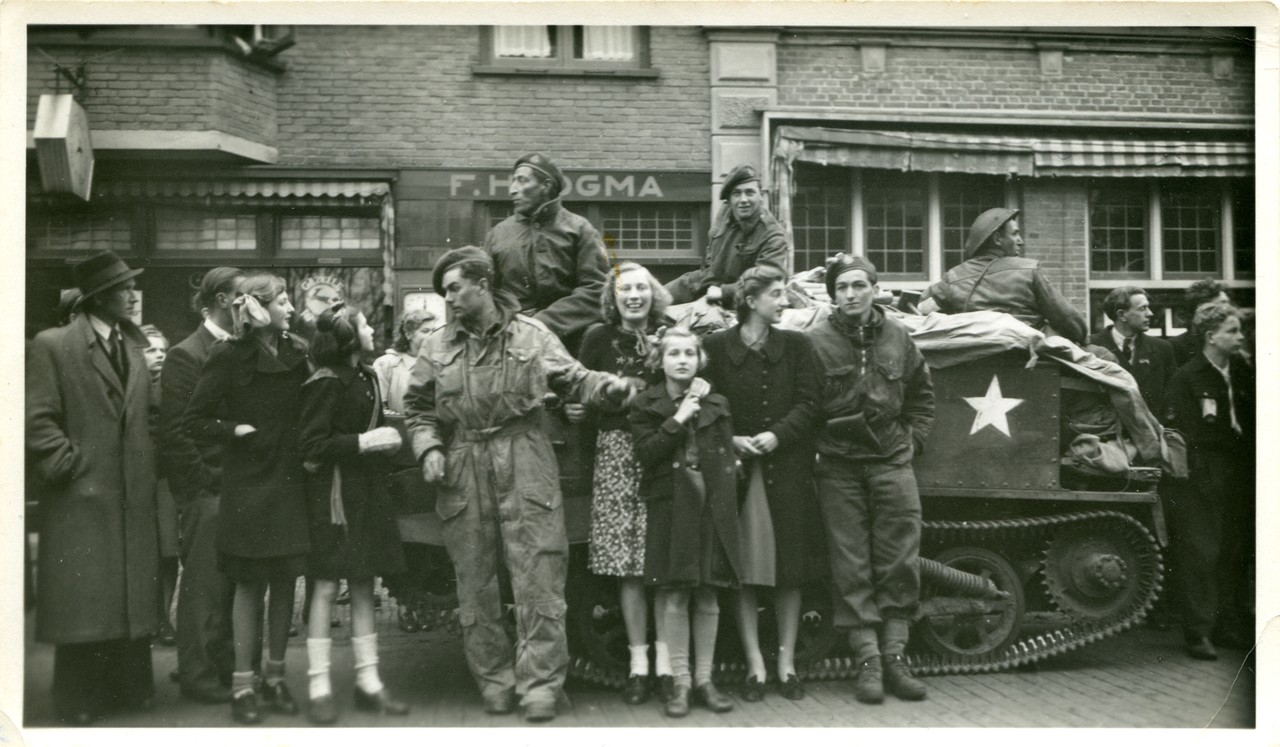Steenwijk was liberated twice: on April 12 and 13, 1945, by the Royal Canadian Dragoons. On the 12th, the Canadians set up a post at the Oosterpoort, but later withdrew. The full liberation of the city followed on April 13. Some skirmishes still took place on the 12th—for example, the church tower was hit during shelling, and a gunfight occurred in the Bloemenbuurt neighborhood. Despite the continued fighting, a special liberation edition of the Opregte Steenwijker Courant newspaper was published that very day.
The occupation had left deep scars. As a result, April 13 saw a kind of “Day of Reckoning”, with NSB members publicly gathered on the town square (the Markt). In the days that followed, numerous celebrations and parades were held—such as a parade in Oosterstraat on June 29, 1945.
April 13, 1945, was a day of joy and relief, but also a day of remembrance for the suffering and struggle caused by the war. The war memorial in Steenwijk (now the municipality of Steenwijkerland) was erected to honor all fellow citizens who lost their lives during the occupation. It also commemorates Steenwijk’s liberation in 1945. The monument was created by the Steenwijk-born sculptor Hildo Krop and was unveiled on May 4, 1948.
